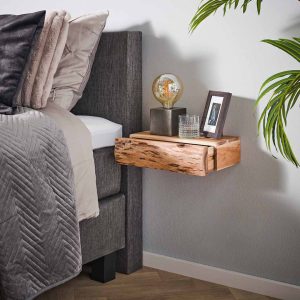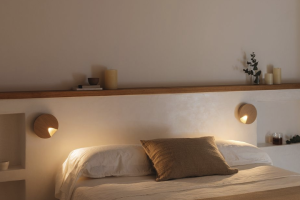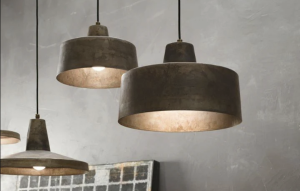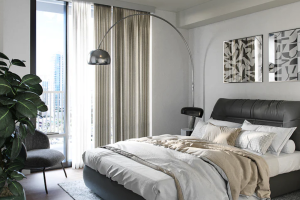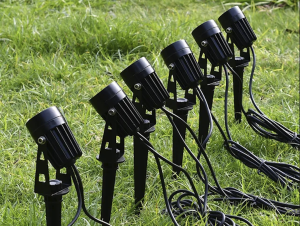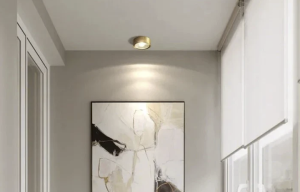Creating a Dreamy and Functional Children’s Bedroom: Tips and Ideas
Introduction
Designing a children’s bedroom that works for both the child and the parent is crucial for creating a harmonious and functional space. A well-designed bedroom can provide a safe and comfortable environment for the child to sleep, play, and grow, while also meeting the practical needs of the parent. In this article, we will explore various aspects of designing a children’s bedroom, including planning, color and theme selection, storage solutions, space optimization, bedding and accessories, reading nooks, personal touches, play areas, lighting, and safety. By considering these factors, you can create a bedroom that not only reflects your child’s personality and interests but also meets their needs and promotes their well-being.
Start with a Plan: How to Design a Children’s Bedroom That Works for You and Your Child
Before diving into the design process, it is essential to start with a plan. Planning allows you to consider the needs and preferences of both the child and the parent, ensuring that the final design is functional and aesthetically pleasing. Begin by assessing the available space and determining how it can be best utilized. Consider factors such as the child’s age, interests, and activities they will engage in within their bedroom.
When creating a plan that works for both the child and the parent, communication is key. Involve your child in the decision-making process by discussing their preferences and ideas. This will not only make them feel included but also help you understand their needs better. Additionally, consider practical aspects such as storage requirements, safety measures, and ease of maintenance.
Choose the Right Colors and Themes to Create a Dreamy Atmosphere
The colors and themes you choose for your child’s bedroom can significantly impact the overall atmosphere of the space. It is important to select colors that are soothing and promote relaxation while also reflecting your child’s personality. Soft pastel shades such as light blue, pink, or lavender can create a calming environment, while brighter colors like yellow or green can add energy and vibrancy.
When it comes to themes, consider your child’s interests and hobbies. Whether they love animals, superheroes, or princesses, incorporating their favorite theme into the bedroom can make it a place they truly enjoy spending time in. However, it is important to strike a balance and avoid going overboard with the theme. Opt for subtle touches such as themed bedding, wall decals, or artwork that can be easily changed as your child’s interests evolve.
Get Creative with Storage Solutions: How to Keep Your Child’s Room Organized and Clutter-Free
Storage solutions are essential in a child’s bedroom to keep the space organized and clutter-free. By getting creative with storage options, you can maximize the available space and make it easier for your child to keep their belongings tidy. Consider incorporating multifunctional furniture such as beds with built-in drawers or bookshelves that double as storage units.
Utilize vertical space by installing wall-mounted shelves or hanging organizers. These can be used to store books, toys, or other items that your child frequently uses. Additionally, consider using storage bins or baskets that can be easily labeled and accessed by your child. This will not only make it easier for them to find what they need but also encourage them to take responsibility for keeping their room tidy.
Optimize Space: Tips for Making the Most of a Small Children’s Bedroom
If you are working with a small children’s bedroom, optimizing the space becomes even more crucial. Start by decluttering and removing any unnecessary items to create a sense of openness. Consider using furniture that serves multiple purposes, such as loft beds with a desk or play area underneath.
Utilize wall space by installing floating shelves or wall-mounted organizers. This will free up floor space and provide additional storage options. Additionally, consider using furniture with built-in storage, such as ottomans or benches with hidden compartments.
To create the illusion of a larger space, use light colors on the walls and choose furniture that is proportionate to the room. Avoid overcrowding the space with too many furniture pieces and opt for minimalistic designs that are both functional and visually appealing.
Make the Bed the Focal Point: Ideas for Choosing the Perfect Bedding and Accessories
The bed is often the focal point of a child’s bedroom, so it is important to choose the perfect bedding and accessories to create a visually appealing and comfortable space. Start by selecting a mattress that provides adequate support and comfort for your child’s growing body. Consider factors such as firmness, size, and material when choosing a mattress.
When it comes to bedding, opt for soft and breathable materials such as cotton or linen. Choose colors and patterns that complement the overall theme of the room while also reflecting your child’s personality. Consider adding decorative pillows or throws to enhance the visual appeal of the bed.
Accessories such as canopies or bed tents can add a touch of whimsy and create a cozy space for your child to sleep and play. Additionally, consider incorporating functional accessories such as bedside organizers or reading lights to make the bed a versatile space for various activities.
Create a Cozy Reading Nook: Ideas for Designing a Space for Your Child to Relax and Read
A cozy reading nook is an essential element in a child’s bedroom as it promotes relaxation, imagination, and a love for reading. Designing a space dedicated to reading can encourage your child to develop good reading habits and provide them with a quiet retreat within their bedroom.
Start by selecting a comfortable chair or bean bag that your child can sink into while reading. Add soft cushions or pillows to enhance the coziness of the space. Consider installing wall-mounted bookshelves within reach of the reading nook to provide easy access to books.
To create a calming atmosphere, incorporate soft lighting such as a floor lamp or string lights. Consider adding blackout curtains or blinds to block out external light and create a more intimate space. Finally, personalize the reading nook with your child’s favorite books, stuffed animals, or artwork to make it truly their own.
Add Personal Touches: DIY Ideas for Decorating Your Child’s Bedroom with Their Artwork and Photos
Adding personal touches to your child’s bedroom can make it feel more special and reflect their unique personality. One way to achieve this is by incorporating their artwork and photos into the room’s decor. Displaying your child’s artwork on the walls can not only add color and visual interest but also boost their self-esteem and creativity.
Create a gallery wall by framing your child’s artwork and arranging it in a visually appealing manner. Consider using colorful frames or mix different sizes and shapes for added visual interest. Alternatively, you can use a clothesline and clothespins to hang their artwork, creating a dynamic and ever-changing display.
In addition to artwork, consider displaying family photos or pictures of your child’s favorite memories. This can be done through photo frames, a photo wall collage, or even a digital photo frame that rotates through different images. These personal touches will make your child feel connected to their space and create a sense of belonging.
Incorporate Play Areas: How to Design a Room That Encourages Play and Imagination
A children’s bedroom should not only be a place for sleeping but also for play and imagination. Incorporating play areas within the room can provide your child with opportunities for creative play and exploration. Consider dedicating a corner of the room for activities such as building blocks, puzzles, or arts and crafts.
Create designated zones for different types of play, such as a dress-up area or a small tent for imaginative play. Consider using rugs or mats to define these areas and make them visually distinct. Additionally, incorporate storage solutions such as bins or baskets to keep toys organized and easily accessible.
To encourage imaginative play, consider adding elements such as a chalkboard wall, a play kitchen, or a puppet theater. These additions can spark your child’s creativity and provide them with endless hours of entertainment within the comfort of their own room.
Lighting Matters: Ideas for Choosing the Right Lighting to Create a Dreamy and Functional Space
Lighting plays a crucial role in creating a dreamy and functional space in a child’s bedroom. Natural light is ideal, so consider positioning the bed and study area near windows to maximize the amount of daylight that enters the room. Use sheer curtains or blinds that can be easily adjusted to control the amount of light.
In addition to natural light, incorporate various types of artificial lighting to create different moods and meet different needs. Consider using a combination of overhead lighting, task lighting, and ambient lighting. Install dimmer switches to adjust the brightness levels according to your child’s activities or preferences.
To create a dreamy atmosphere, consider using string lights or fairy lights as a decorative element. These can be hung around the bed frame, draped along the walls, or used to create a canopy effect. Additionally, consider using nightlights or soft bedside lamps to provide a comforting glow during nighttime.
Safety First: Tips for Designing a Children’s Bedroom That is Safe and Secure for Your Child
When designing a children’s bedroom, safety should always be a top priority. Consider the following tips to ensure that your child’s bedroom is safe and secure:
1. Choose furniture with rounded edges and avoid sharp corners that can pose a risk of injury.
2. Secure heavy furniture such as bookshelves or dressers to the wall to prevent tipping.
3. Use cordless window coverings or install cord safety devices to prevent strangulation hazards.
4. Keep small objects, cords, and electrical outlets out of reach of young children.
5. Use non-toxic paints and finishes to minimize exposure to harmful chemicals.
6. Install smoke detectors and carbon monoxide detectors in the bedroom and throughout the house.
7. Ensure that the room is well-ventilated to promote good air quality.
8. Regularly check and maintain electrical outlets, light fixtures, and other electrical components for safety.
By implementing these safety measures, you can create a bedroom that provides a secure environment for your child to thrive in.
Conclusion
Designing a children’s bedroom that works for both the child and the parent is essential for creating a harmonious and functional space. By considering factors such as planning, color and theme selection, storage solutions, space optimization, bedding and accessories, reading nooks, personal touches, play areas, lighting, and safety, you can create a bedroom that reflects your child’s personality and interests while also meeting their needs. Remember to involve your child in the decision-making process and prioritize their safety and well-being. With careful planning and thoughtful design choices, you can create a space that your child will love and enjoy for years to come.
If you’re looking for the perfect lighting solution for your child’s bedroom, check out this article on using a table lamp like a tree to illuminate your home. This unique and whimsical lamp not only provides ample light but also adds a touch of nature to the room. With its adjustable branches and warm glow, it creates a cozy and inviting atmosphere for bedtime stories and playtime. Click here to read more about this innovative lighting option: https://www.koolroomz.net/2023/03/24/using-a-table-lamp-like-tree-to-illuminate-your-home/.

